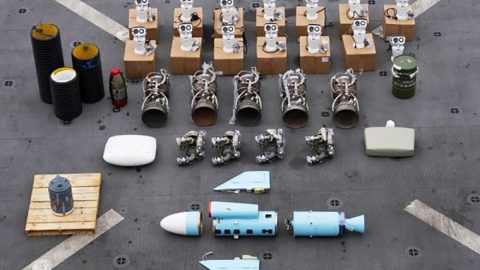Erik Tollefsen, head of the weapon contamination unit at the International Committee of the Red Cross, echoed this warning.
“In the past, we knew where the hazards were. Now we don’t know. All we know is that they are somewhere downstream,” he told Reuters on Thursday.
And as for how long the threat might persist, land mines from World War II found in Denmark in 2015 were found to still be live and operational, Tollefsen said.
Greg Crowther, director of programs at the Mines Advisory Group, a British NGO, also stressed the long-term effects of mine subsidence and warned that the unexploded bombs could end up in homes and public spaces.
“Some of them could be damaged and unstable and they could be buried under silt or flood debris or have become lodged in homes, public spaces or gardens,” he said in a statement.
“Some of them might be buried so deeply that detecting them in the future will be extremely challenging, but they might still pose a danger if, for instance, they are unearthed during post-conflict reconstruction work.”
The dam collapse also poses health risks beyond the threat of mines.
Ukrainian President Volodymyr Zelenskyy said in an online briefing Thursday that as well as hindering water supplies, the dam breach meant warehouses containing hazardous chemicals, including fertilizer and what he called “anthrax burial” sites in Russian-controlled territory, were flooded. Animal burial sites were also flooded, he said, alongside sewage systems.
All of this, he added, is headed for the Black Sea, a crucial waterway for international shipping and food supplies.
Videos shared on social media by Ukrainian politicians and the country’s military show debris including a roof washing up on the coast of Odesa, a Black Sea port city.
“Pollution and poison from the flooded area quickly gets into the groundwater, poisons the rivers, and from there it enters the Black Sea basin,” Zelenskyy said.
“That is, there is no destruction of nature ‘somewhere out there’ — everything in the world is very interconnected.”
Matthew Mulligan and Sara Mhaidli contributed.









Recent Comments